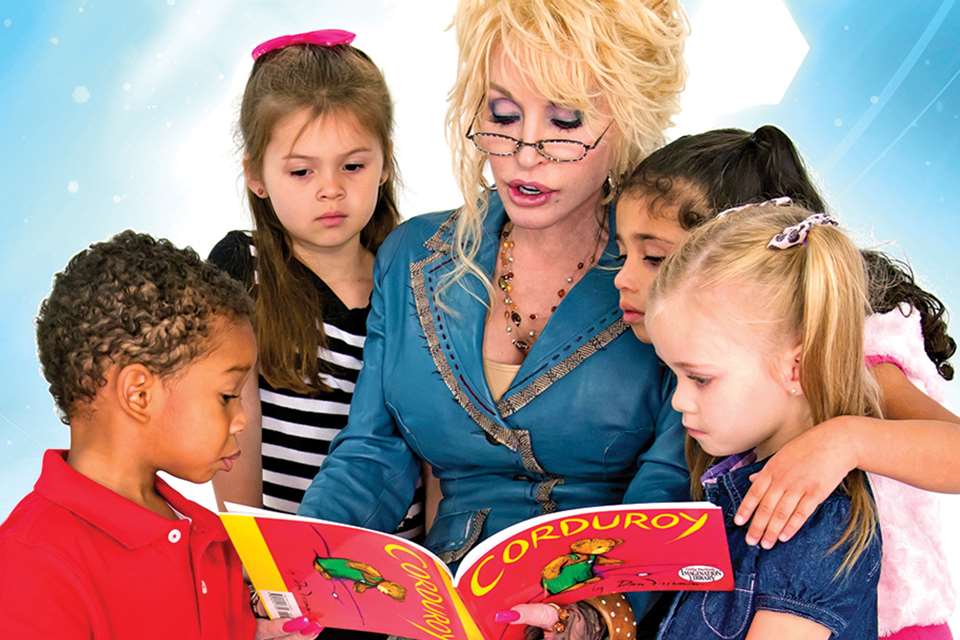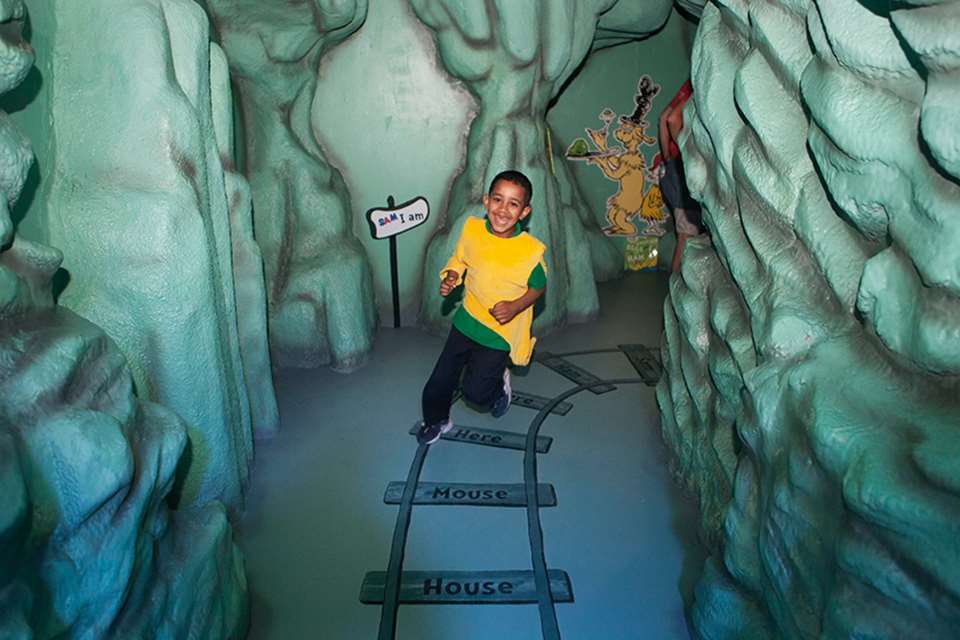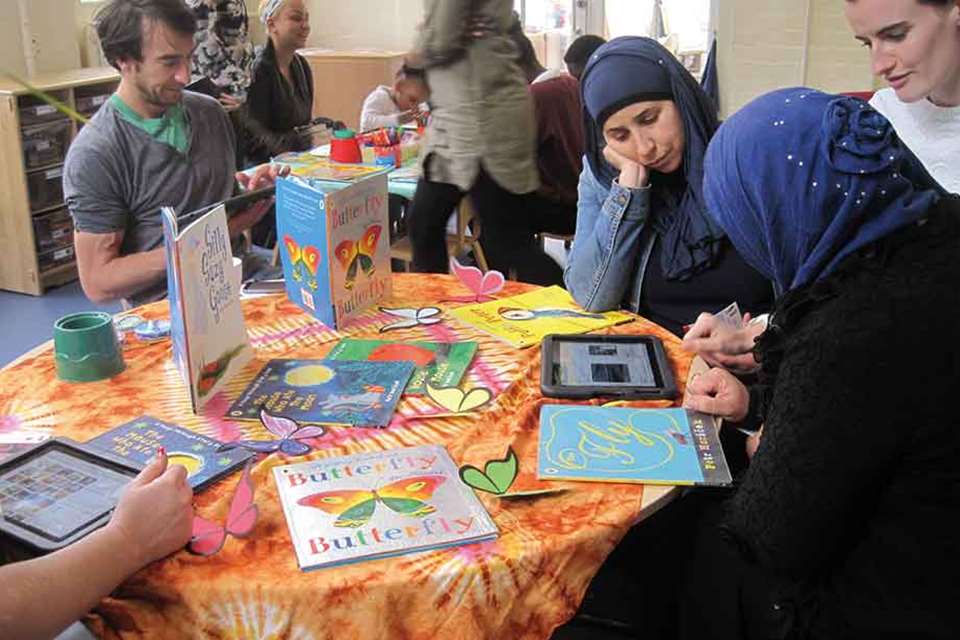Learning & Development: Literacy - In focus
Lucy Rodriguez Leon and Tamsin Harvey
Monday, April 3, 2017
How a ‘Focus Stories’ approach and skilful adult ‘scaffolding’, rather than instruction, can boost young children’s engagement with books. By Lucy Rodriguez Leon and Tamsin Harvey

Shared book reading, story time and the book corner are all common features in early years settings, but the learning and development that young children gain from these activities are strongly linked to the quality of the adult-child interactions and relationships that support children’s engagement with books.
Skilful adult scaffolding during book-related activities can positively enhance aspects of children’s learning, while taking a ‘Focus Stories’ approach can enrich children’s engagement with books and promote a deeper level of learning.
Particularly effective in helping an adult scaffold children’s learning is ‘dialogic reading’, which requires us to re-evaluate the idea of the adult as the reader and the child as the listener – rather than reading to children, we are reading with them. During shared book reading it is neither the adult nor the child who is ‘in charge’ of the activity; it is a partnership.
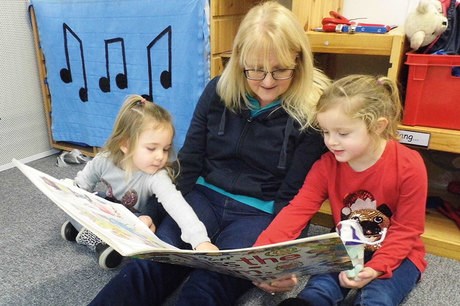 Vygotsky’s socio-cultural theory of child development shows how the adult and child ‘co-construct’ meaning when engaged in natural two-way responsive conversation. During these ‘high-quality’ interactions, children become active participants in book-related conversation, and the potential learning is extended (Milburn 2014). Examples include:
Vygotsky’s socio-cultural theory of child development shows how the adult and child ‘co-construct’ meaning when engaged in natural two-way responsive conversation. During these ‘high-quality’ interactions, children become active participants in book-related conversation, and the potential learning is extended (Milburn 2014). Examples include:
Developing language Books, for young children, are a source of new vocabulary, which they encounter in the natural and meaningful context of the story or factual text. The learning can be further enhanced by conversations in which the child can try out these new words and clarify meaning with the adult. Additionally, the child may discover novel ways to structure a sentence or encounter a new word ending, all leading to a fuller language repertoire with which to express themselves. All the while the child is developing the ability to make meaning from written and spoken language through both the text in the book and the dialogue in which they are taking part.
Understanding ideas and concepts Our written language, like our oral language, is a communication tool that we use for a range of purposes. During shared book reading, the adult and child co-construct an understanding of the ideas and concepts that form the content of the text. For example, the properties of building materials in The Three Little Pigs or the idea of citizenship in The Little Red Hen.
Many children’s stories have a moral or address a social or personal issue, such as Michael Rosen’s Little Rabbit Foo Foo. Through conversation, the child is better able to relate these ideas to their personal experiences and existing knowledge. This is facilitated further when there is a good match between the storyline and the illustrations (Nutbrown 2011). Through tactful open questioning, adults can encourage more sophisticated responses from children, which facilitates the active development of knowledge.
Shared attention Adult and child book-sharing is one of many activities that promote rapport, connectedness and shared attention. The co-construction of ideas through dialogue develops empathy and affinity – two minds on the ‘same wavelength’, linked through the book. These moments can be magical for both child and adult, promoting self-esteem and a deep sense of belonging in one’s world.
Reading for pleasure These moments promote reading as a highly pleasurable activity that leads to personal satisfaction. The idea of children reading for pure enjoyment can be lost within our highly test-driven national curriculum, in which getting the structure of literacy correct is the main goal. In fact, the constant requirement to read and write words accurately with no other purpose than to ‘get it right’ may put children off the whole idea.
The early years are the time when children can experience the pure enjoyment of a good story or discover new ideas about the topics that interest them. Stories allow children to delve into imaginary worlds and to experience and empathise with emotions such as anticipation, surprise, fear, sadness, suspense and amusement from a safe ‘onlooker’ perspective. The ‘skill’ to read does not necessarily lead to the ‘will’ to read, but in a literate society when print is in abundance, the ‘will’ facilitates the ‘skill’ (Cremin et al2014). Positive early experiences with books can lead to a love of books that can last a lifetime.
Book-related knowledge Most of the skills and knowledge each of us possess are not learnt through direct teaching but from being active members of our society, community and culture. As we read with young children we are modelling the behaviours of ‘a reader’. Without any intent or effort, children begin to develop knowledge that:
- print carries meaning
- print is read in a certain direction
- written words are made up of letters
- a written word represents a spoken word
- there are systems to deciphering print.
Phonological awareness This is an understanding of the sounds that make up a language (44 sounds in English) and the ability to break them down into individual sounds and build them back up again into words (blending and segmenting).
This is the foundations of a phonics approach to reading and writing. Stories with a good rhythm, along with songs and nursery rhymes, lend themselves to ‘story-singing’ and help to develop phonological awareness.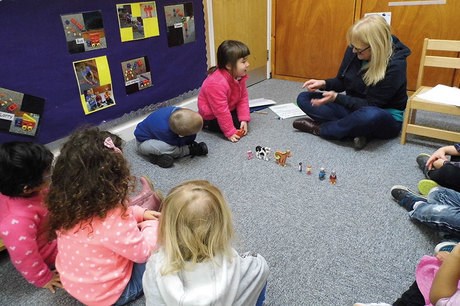
FOCUS STORIES APPROACH
With a few small adjustments on the part of the adult, book-sharing can become so much more than ‘reading a quick story’. With this in mind, staff at Huntingdon Nursery School in Cambridgeshire have developed a Focus Story approach, continually evolving through reflective practice since 2011, where the book and story become integrated into planning across the full curriculum to further enhance the learning potential.
The Focus Story is a book that has been thoughtfully chosen (see box, right) and provides a broad theme to the planning across a range of curriculum areas, typically lasting between one and three weeks.
Activities relating to the story take place during small group sessions and free-flow play.
We prefer not to use the terms ‘adult-led’ and ‘child-initiated’ as opposites, but rather think of a continuum where the balance is constantly shifting. Therefore, during the group sessions the balance leans towards adult-led, and during free-play it leans towards child-initiated. The focus story is an addition to the existing provision, and a range of stories, books and other reading material continue to be on offer. Similarly, story-related enhancements complement the overall planning rather than dictating it.
Group activities
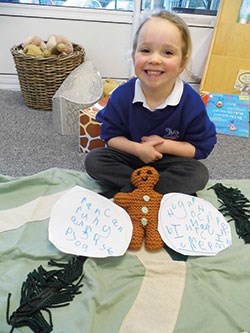 The chosen book is introduced to the children during a small group session, preferably with no more than 10 children. First, the adult prompts a discussion which centres around what the book might be about, such as main characters, concepts or events. Props and online resources are useful at this point, especially if the book contains elements the children may not have previously encountered. So, for example, when working with The Three Little Pigs, you may have some straw, twigs and a house brick, or with Paper Dollsby Julia Donaldson you could cut out a chain of paper dolls with the children. Depending on the season, you may need to use YouTube clips to develop understanding, for example of caterpillars for Eric Carle’s The Very Hungry Caterpillar.
The chosen book is introduced to the children during a small group session, preferably with no more than 10 children. First, the adult prompts a discussion which centres around what the book might be about, such as main characters, concepts or events. Props and online resources are useful at this point, especially if the book contains elements the children may not have previously encountered. So, for example, when working with The Three Little Pigs, you may have some straw, twigs and a house brick, or with Paper Dollsby Julia Donaldson you could cut out a chain of paper dolls with the children. Depending on the season, you may need to use YouTube clips to develop understanding, for example of caterpillars for Eric Carle’s The Very Hungry Caterpillar.
Identifying and pre-teaching the key vocabulary in the book triggers better understanding of the whole. This stage is beneficial for all, but is of extra value to children in the early stages of learning English.
It is important that children have an opportunity to consider and express their existing knowledge and experiences relating to the story. For example, on seeing a book cover illustrated with a cat, the child’s network of neurons (brain cells) bursts into actions, pulling their prior knowledge about cats to the forefront of their minds. Hence, a chorus of ‘I’ve got a cat’ or ‘Oh, my nan has a cat’ follows. This is a vital part of the thinking and learning process, and the initial group discussion allows this to happen mainly prior to reading to the group rather than during.
Once this background knowledge is covered, the story is then read to the children in full. We like to encourage relevant and appropriate participation from the start, such as joining in with repetitive refrains; for example, ‘I’ll huff and I’ll puff.’
We return to the story every two or three days in small groups and develop children’s participation in the story through a variety of activities, such as:
Drama Initiated by the adult, the children can take on roles and act out the story. Recording this on video allows the children to watch themselves and reflect on the experience.
Collective rewritings Where the adult scribes the children’s retelling of the story.
Exploring concepts in other texts For example, to complement Jill Murphy’s Whatever Next!, the concepts of space, the moon and rockets can be explored through other stories and non-fiction.
Adaptation Children can use photos or props to retell the original story or create new versions.
Teacher role As the story becomes familiar, children may want to take on the role of ‘teacher’ and tell the story to the group.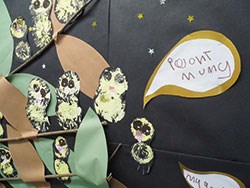
Free-play provision
Having Focus Story-related provision on offer in the classroom and outdoor area allows children to further develop their engagement with the story in their own way. The adult’s role varies, sometimes becoming involved in the child-led play, sometimes providing sensitive and supportive scaffolding and sometimes standing back and observing.
The book itself will always be available for children to look at alone, with peers or with an adult. In addition:
Story apps and eBooks High qualityapps can extend and enhance a story; Nosy Crow makes particularly good ones. Look for apps that enhance rather than detract from the narrative.
Story sack/props A few laminated pictures, figures and related objects can simulate some very creative play. Exact replicas are not necessary; the child’s imagination is the greatest resource.
Dressing-up costumes and role-play props These allow the child to put themselves into the story.
Craft activities Paint, glue, collage, 2D, 3D – the possibilities are limitless.
Personal bookmaking With tactful adult scaffolding (rather than direction), children can create their own versions of the book. These can be paper versions or electronic using a story creation app such as the Our Story app created by Open University.
Character or main event trails These work well in the outdoor area by placing pictures or objects around the environment to simulate re-enactment of a story.
The Focus Story approach allows for progressively more complex participation in the story where the child can move from a passive recipient of the story to a co-constructor of meaning and knowledge. However, in their own play, children improvise and actively construct meaning (Whitehurst et al 1994) where the story can be taken in any direction their creative imaginations wish. This play may stay ‘true to the book’ or go off on a tangent and into new realms, which is fine. This is where higher-order thinking and complex cognitive processes happen as the child brings together and engages all their knowledge, their skills, their memories and experience in novel enactments with infinite possibilities.
We have found that using this approach helps us to see the child as an active participant in story activities. There are no set lesson plans; instead, continual practitioner reflection allows for the balance of adult-led and child-initiated to remain in flux and create an environment that leads to deeper, more meaningful learning.
FOCUS STORY CHOICES
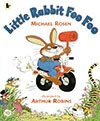 There are no rules for which books make a good focus story. Much depends on the interests developing among the children in the setting. We find some books support particular schemas well, and books with repetitive refrains are good in the early weeks as the children become accustomed to the idea of participation. Books that work with abstract concepts such as growth, or concepts of right and wrong, such as The Little Red Hen or Mr Wolf’s Pancakes by Jan Fearnley, offer avenues to explore differing perspectives.
There are no rules for which books make a good focus story. Much depends on the interests developing among the children in the setting. We find some books support particular schemas well, and books with repetitive refrains are good in the early weeks as the children become accustomed to the idea of participation. Books that work with abstract concepts such as growth, or concepts of right and wrong, such as The Little Red Hen or Mr Wolf’s Pancakes by Jan Fearnley, offer avenues to explore differing perspectives.
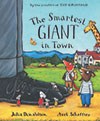 Other books we have found successful include:
Other books we have found successful include:
Little Rabbit Foo Foo by Michael Rosen
Dear Zoo by Rod Campbell
The Smartest Giant in Town by Julia Donaldson
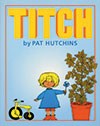 Kipper’s Toybox by Mick Inkpen
Kipper’s Toybox by Mick Inkpen
A Dark, Dark Tale by Ruth Brown
Titch by Pat Hutchins
References
Cremin Tet al(2014)Building Communities of Engaged Readers: Reading for Pleasure. Routledge
Milburn TFet al(2014) ‘Enhancing preschool educators’ ability to facilitate conversations during shared book reading’, Journal of Early Childhood Literacy, 14(1), 105-140
Nutbrown C (2011)Threads of Thinking: Schemas and Young Children’s Learning. Sage
Resources
Our Story app, www.open.ac.uk/creet/main/projects/our-story
Lucy Rodriguez Leon is a doctoral researcher in early childhood literacy at the Open University (@lucyRL47). Tamsin Harvey is the assistant head teacher at Huntingdon Nursery School, Cambridgeshire (tharvey@huntingdon-nur.cambs.sch.uk). The authors have drawn upon work that has been collectively developed by the staff team at Huntingdon Nursery School, whose expertise is gratefully acknowledged.




